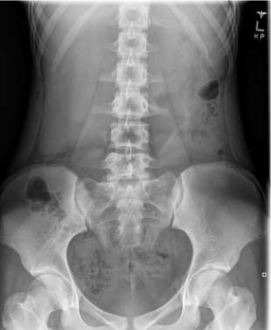The liver is considered the largest organ of the body. The size of the liver depends on various factors like body size, sex, age, and shape whether it is examined through imaging techniques or clinically. Due to some underlying conditions or anatomic variations, the liver can be palpable.
Although these abnormalities are quite rare, they occur. Now, what is the Riedel lobe? It is a tongue-like projection that is faced downwards of the right lobe and gallbladder.
Riedel confirmed this anatomical variation of the liver in female patients; they were diagnosed with Riedel’s lobe during surgery. Typically, these kinds of cases are quite rare and they vary in the general population worldwide. Multiple diagnostic methods are used to diagnose Riedel’s lobe. Let’s dig a bit deeper into the location of Riedel’s lobe for better understanding.
Riedel’s Lobe Location
The usual detection of Riedel’s lobe is through surgery or autopsy. It can be a result of embryonic heteroplasia or Riedel’s lobe can be a result of any trauma. It is mostly observed in women. The other name of Riedel’s lobe is the floating lobe or constriction lobe.
If the Riedel lobe is of congenital origin then it is supported by Dysembryoplastic anomaly which is located in the hepatic bud. This leads to the formation of the Riedel lobe or accessory lobes. These are formed in intrahepatic positions.
Hepatic modifications due to any reason can also cause Riedel’s lobe. It is present at the anterior position of the liver on the right side, which also touches the right side of the gallbladder. Proper diagnosis and knowledge of the location and cause of Riedel’s liver are important because they can lead to severe complications, if not treated or diagnosed timely.
Riedel’s Lobe Symptoms
Riedel’s lobe may present with minor symptoms like abdominal discomfort, nausea, constipation, and vomiting. This discomfort is caused due to compression caused extrinsically or there can be no cause. The symptoms of Riedel’s liver be the same as any of the following conditions:
- Emphysema
- Congestive heart failure
- Pleural effusion on right side
- Thin body carriage
- Deep diaphragmatic excursion
- Cirrhosis
- Metastatic cancer
- Hepatic cancer
Symptoms might vary from person to person but it is vital to consult your doctor if you are facing unusual symptoms. If there are no symptoms, then Riedel’s lobe is discovered during surgical procedures and autopsy.
Mostly, it is misdiagnosed and considered to be treated according to the symptoms but the patient does not improve leading to a chronic condition, which usually requires surgery. Patients with underlying liver issues should be more concerned and never miss regular check-ups.
The diagnostic tests usually recommended for diagnosing Riedel’s Lobe are ultrasound, CT scan, MRI, and radionuclide imaging. The lesion is discovered with the hepatic ultrasound and vascular and cystic features can be depicted by the doppler test.
Riedel’s Lobe Complications
Riedel’s lobe diagnosis in early stages can save patients from serious complications. This includes chronic inflammation. Proper treatment and surgery can help to prevent liver-related complications.
Complications may include excruciating abdominal pain that is not cured with analgesics or pain medications. Chronic constipation can be a problem too. Sometimes, it is considered hepatomegaly due to the abnormal mass in the liver. Muscle aches, jaundice of eyes and skin, fatigue, and lack of appetite are also some of the problems experienced by the patients of Riedel’s lobe. Due to the increased liver mass, there might be a protruding stomach due to fluid accumulated in your abdomen. Blood in vomit and black stools are also few effects that need to be considered serious if you are suffering from Riedel’s lobe. You need to seek medical advice if you are suffering from any symptoms.
Riedel’s Lobe Surgery
Riedel’s lobe surgery is the best option to consider if no medication is affecting. Sometimes liver transplant is the last resort in the treatment. The increased liver is surgically resected to treat this condition.
It is also known as hepatectomy in other words. A donor donates a part of the liver to the recipient in the case of partial hepatectomy. There are two options to perform this procedure either it is conducted with minimally invasive techniques or open-end surgery.
This kind of surgery is considered safe if they are conducted by skilled surgeons with good medical practice. The liver is an important organ of the body and its dysfunctionality can pose serious health-related issues.
 Health & Care Information
Health & Care Information 


